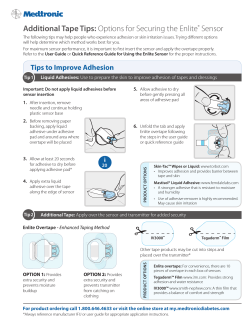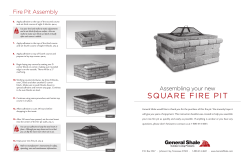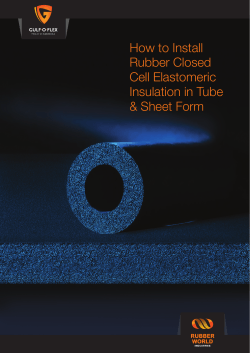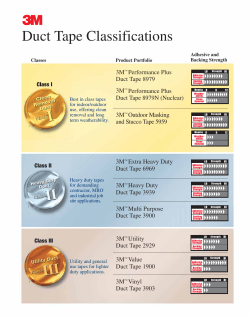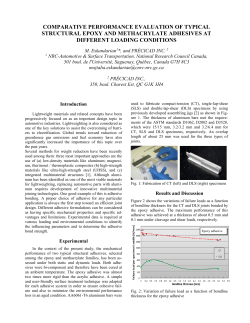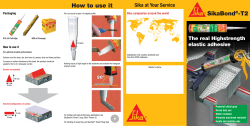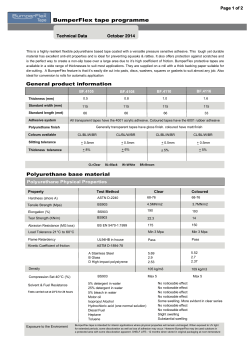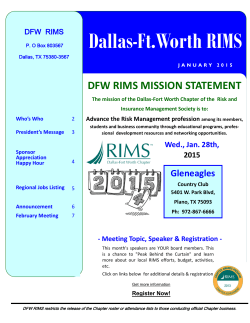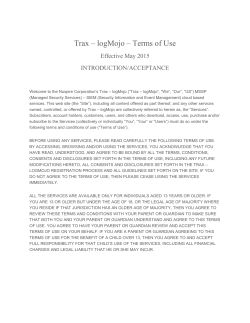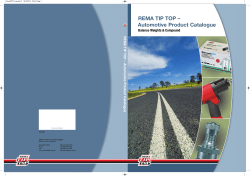
Why do adhesive weights fall off? BALANCE WEIGHT TECHNOLOGY
BALANCE WEIGHT TECHNOLOGY Why do adhesive weights fall off? A reliable solution - The PROFESSIONAL adhesive weight range with LOHMANN TAPE is recommended for a high quality all round tyre shop adhesive weight fitment. Particularly recommended for new or refurbished alloy rims. Approved for OE use. Reasons why adhesive weights may not be sticking to alloy rims... 1. For “blue liner” tape (including the St Gobain/Norton as used by some OE - plus most Chinese weights) it is recommended to only fit this tape to rims at temperatures of 16°C or above. Below this temperature the adhesive is less sticky and may fall off. The “blue liner” tape is designed to be fitted in car plants at factory temperatures. This is one reason why TRAX developed the PROFESSIONAL adhesive tape solution as this can be fitted down to minus 10°C. Tyre shops in cold weather can have adhesive weight fitment problems due to the adhesive not being very “active” at colder temperatures. More retention problems are noticed in colder weather months. It is recommended to store your adhesive weights at room temperature. SUB ZERO ALL WEATHER TAPE sticks on cold wheels -10°C / 14°F 2. All adhesive tapes used on balance weights are pressure sensitive. It is necessary to push on the length of the whole weight hard for 2/3 seconds. Failure to do so may mean the adhesive will not chemically bond to the rim surface and may fall off. The Trax PROFESSIONAL tape offers a better solution as the tape is softer allowing for a more consistent and reliable fitting. 3. Grooves or a rough surface on the rim surface are also a problem. There is less surface for the adhesive to stick to, plus moisture can ingress under the tape from the ends. The Trax PROFESSIONAL tape is softer which allows a better fit to the inside of alloy rim surfaces which can sometimes be seen with “as cast” finishes or “orange peel” or machined grooves etc. Typical blue liner tapes (eg most Chinese and St Gobain/Norton tapes) have a hard surface which is OK to stick to a smooth surface (eg a badge or bodyside moulding to a painted car surface) however the inside of alloy rims are not always a smooth flat finish. The Trax PROFESSIONAL tape is soft which means it will adhere better to a rough or grooved surface and therefore will typically stick better to the inside of alloy rims. The downside of using a soft tape (it is the carrier for the adhesive) is that it will not peel cleanly from the rims. In our experience fitters are more worried about making sure the weights will not fall off than if they peel cleanly from the rims after use. Tip - use a CARAMEL WHEEL in an electric drill to quickly remove tape residue on the alloy wheel Tip - if the adhesive weight is not sticking to the rim then take another and stick to clean glass. If the weight sticks well then it is not the tape adhesive causing the problem but the rim surface, poor cleaning, a lack of pressure on application or cold temperature. Or a combination of all these working together. 4. We recommend cleaning rims using an ISOPROPONOL based cleaner. It evaporates quickly and is relatively non-toxic, compared to alternative solvents. It is used widely as a solvent and as a cleaning fluid, especially for dissolving oils. It will also remove condensation from the metal rims. 5. On new or refurbished rims the surface energy (see technical note below) of the paint or lacquer can be too low to readily allow the adhesive to bond. Some paints and lacquers do not allow the adhesive to chemically bond with the rim surface - or the rim may have been wiped with cloth containing a silicone polish. The rim looks clean but in fact has a slippery surface not allowing the tape to stick. The ability to stick may also vary around the inside of the alloy wheel if it has been sprayed with a lacquer or paint with a low surface energy (ie a surface which is not easy to stick to). The surface energy may vary as the paint or lacquer density changes depending on the spray consistency and how well it is sprayed behind the wheel spokes. This also helps explain why there can be differences in the bonding ability of adhesive tapes on different wheels. This means you may get different sticking results depending where you fit the adhesive weight around the rim. 6. Sometimes on a new or refurbished rim the weight will apparently stick well but over a matter of days or a week or so will fall off as the paint or lacquer surface is still curing which can “lift” the weight. It is like painting in your house - although the paint is “dry” if you get close you can still smell the paint some days later as it can take time for the paint surface to fully harden and cure. Technical Note - Surface energy is measured in dynes - the higher the dynes the better the stick will be. We recommend a minimum of 36 dynes as a surface energy level for alloy rim surfaces - although this is also dependent on ensuring the weight is properly fitted and the rim clean. The ready bonding ability will also depend on temperature. We are aware of alloy rim surfaces down to 28 dynes - for example a rubber tyre will be around 30 dynes and you would not expect to stick adhesive weights to a tyre! There are surface energy pens which will give an indication of a surface energy. They can only give an indication but are the only easy way of measuring surface energy - the alternative is to use a laboratory. We can advise sources of these “pens” if required but you can find them on the inter 7. When fitting adhesive weights to new or refurbished wheels it is necessary to always clean the rims in the area where the adhesive weights are to be fitted using an ISOPROPONOL wet wipe. Not only does this help to clean the rim but it also removes condensation. Wet wipes are preferred - using a chemical spray will not be consistent and putting too much on to the rim is a problem as the weight may try to be fitted before the isoproponal has had time to evaporate. Tip for OE tyre fitting - if using ”blue liner” hard adhesive tape (eg St Gobain/Norton), it is recommended to store alloy rims in a heated warehouse for a minimum of 24 hours and to ensure the rims are at a minimum 16°C when balanced. Fitting rims straight from a delivery truck in cold weather should be avoided. This is not a requirement if using the Trax PROFESSIONAL range as the adhesive is still active at sub- zero temperatures down to -10°C. Trax professional range 614C also available in black 615C © TRAX JH Ltd May 2014 Tel: +44 (0) 1686 610169 sales@traxjh.com www.traxjh.com ©Trax JH Ltd Mochdre Enterprise Park, Newtown, Powys. UK SY16 4LE
© Copyright 2025

